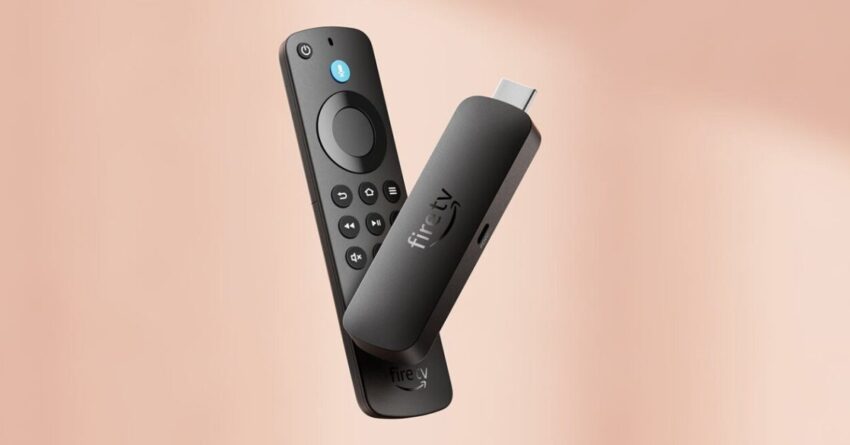
amazon will keep using android on fire Amazon has confirmed its commitment to using Android for its Fire TV lineup, indicating that its new Vega OS will primarily target low-end or low-power devices.
amazon will keep using android on fire
Amazon’s Strategic Decision on Fire TV
In a recent announcement, Amazon clarified its ongoing relationship with the Android operating system for its Fire TV devices. This decision comes amid the development of a new operating system, Vega OS, which is expected to cater to low-end devices. The implications of this dual approach highlight Amazon’s strategy to maintain a competitive edge in the streaming device market while also exploring new opportunities in low-power technology.
The Role of Android in Fire TV
Android has been a cornerstone of Amazon’s Fire TV ecosystem since its inception. Utilizing Android allows Amazon to leverage a robust platform with a wide array of applications and services, which enhances the user experience. The Fire TV devices have thrived on this foundation, offering users access to popular streaming services, games, and other applications.
By continuing to use Android, Amazon ensures that its Fire TV devices remain compatible with a vast library of apps, including Netflix, Hulu, and Amazon Prime Video. This compatibility is crucial for attracting and retaining customers who expect a seamless streaming experience.
Introduction of Vega OS
Vega OS represents Amazon’s foray into developing a proprietary operating system tailored for specific device categories. While details about Vega OS are still emerging, the focus appears to be on low-end and low-power devices. This strategic pivot may allow Amazon to capture a segment of the market that has been underserved, particularly in regions where affordability is a key consideration.
Market Context and Implications
The streaming device market has become increasingly competitive, with numerous players vying for consumer attention. Companies like Roku, Apple, and Google have established themselves as formidable competitors. In this landscape, Amazon’s decision to stick with Android for its Fire TV lineup while developing Vega OS could provide a strategic advantage.
Targeting Low-End Devices
The focus on low-end devices through Vega OS could open new avenues for Amazon. Many consumers in emerging markets are looking for affordable streaming solutions that do not compromise on quality. By creating an operating system designed for lower specifications, Amazon could tap into this growing demographic.
Furthermore, the development of Vega OS may allow Amazon to optimize performance and user experience specifically for these devices. This could lead to enhanced streaming capabilities, quicker load times, and a more responsive interface, all of which are critical factors for user satisfaction.
Potential Challenges
While the dual approach of using Android alongside Vega OS presents opportunities, it also comes with challenges. One significant concern is the potential fragmentation of the user experience. If Fire TV devices run on different operating systems, it could lead to inconsistencies in app performance and availability. Users may find it confusing if certain apps are available on one platform but not the other.
Moreover, the development and maintenance of two operating systems could strain Amazon’s resources. Ensuring that both Android and Vega OS are regularly updated and secure will require significant investment in engineering and support teams. This could divert attention from other critical areas of Amazon’s business.
Stakeholder Reactions
The announcement has elicited a range of reactions from stakeholders in the tech industry. Analysts have noted that Amazon’s decision to continue using Android is a pragmatic choice, given the operating system’s popularity and established ecosystem. However, they also caution that Amazon must tread carefully to avoid alienating users who may prefer a more unified experience.
Consumer Perspectives
From a consumer standpoint, the news has been met with mixed feelings. Many users appreciate the familiarity and reliability of Android, which they have come to expect from their Fire TV devices. The prospect of a new operating system may raise concerns about compatibility and the availability of apps. Users often prioritize a seamless experience, and any disruptions could lead to dissatisfaction.
Industry Analysts’ Insights
Industry analysts have expressed cautious optimism regarding Amazon’s strategy. Some believe that the introduction of Vega OS could position Amazon favorably against competitors who have yet to explore low-end markets effectively. The ability to offer a tailored experience for budget-conscious consumers could differentiate Amazon’s offerings in a crowded marketplace.
Future Outlook
As Amazon moves forward with its plans for both Android and Vega OS, the company will need to navigate the complexities of maintaining two operating systems while ensuring a cohesive user experience. The success of this strategy will depend on how well Amazon can integrate the strengths of Android with the innovations of Vega OS.
Long-Term Implications for Amazon
In the long term, Amazon’s decision to invest in Vega OS could have significant implications for its overall business strategy. By diversifying its operating systems, Amazon may be positioning itself to capture a broader audience and adapt to changing market dynamics. This flexibility could be crucial as consumer preferences evolve and new technologies emerge.
Furthermore, the development of Vega OS may allow Amazon to explore new partnerships and collaborations with content providers and app developers. A unique operating system could attract developers looking to create tailored applications for low-end devices, further enriching the Fire TV ecosystem.
Conclusion
Amazon’s commitment to Android for its Fire TV lineup, coupled with the development of Vega OS for low-end devices, reflects a strategic approach to navigating a competitive market. By balancing the strengths of an established operating system with the potential of a new, proprietary platform, Amazon aims to cater to a diverse range of consumers. As the company moves forward, the success of this dual strategy will hinge on its ability to deliver a seamless and satisfying user experience across all devices.
Source: Original report
Was this helpful?
Last Modified: November 18, 2025 at 3:37 pm
2 views















